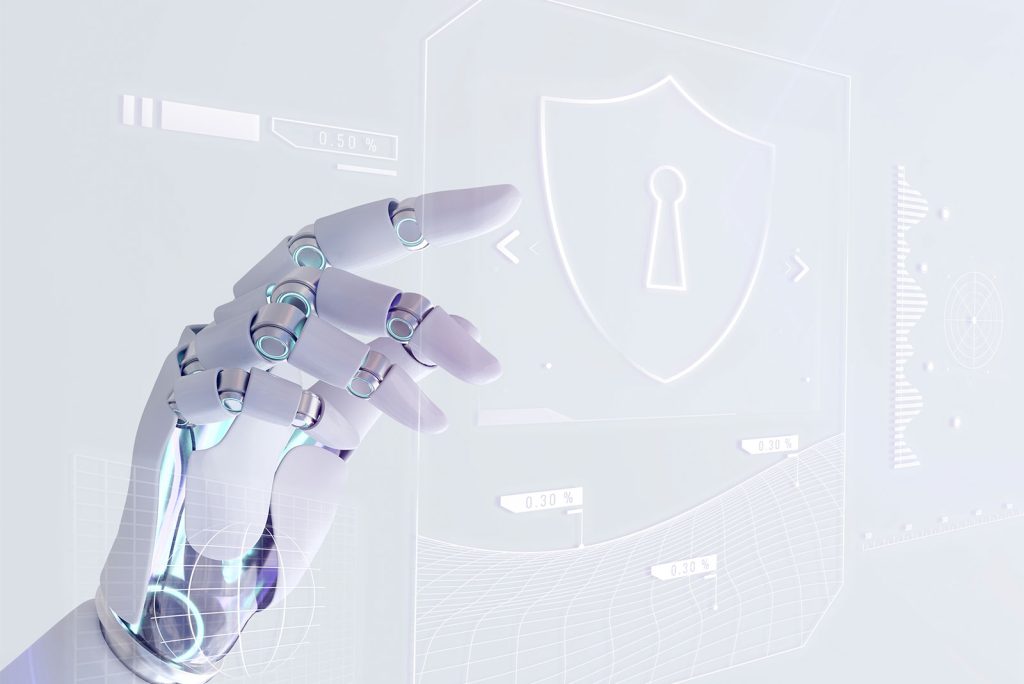How AI is Advancing Cybersecurity Protocols

Discover How AI is Advancing Cybersecurity Protocols: Revolutionizing Digital Defense in a Hyperconnected World

As digital threats continue to evolve, cybersecurity remains a top priority for businesses, governments, and individuals. Traditional cybersecurity measures, while effective to some extent, are increasingly overwhelmed by the sheer volume and sophistication of cyberattacks. Artificial Intelligence (AI) is stepping in to revolutionize cybersecurity protocols, offering advanced solutions to detect, prevent, and respond to cyber threats more effectively. In this article, we will explore how AI is advancing cybersecurity protocols, the key benefits it brings, and real-world applications that are helping to secure digital infrastructures.
Introduction
In today’s hyperconnected world, cyber threats have become more sophisticated and frequent. Hackers are continuously evolving their tactics to bypass traditional security measures. As organizations increasingly rely on digital systems, the need for stronger, smarter cybersecurity protocols has never been more critical. AI is playing a pivotal role in transforming the cybersecurity landscape by automating threat detection, enhancing response times, and predicting potential vulnerabilities before they can be exploited.
The Role of AI in Cybersecurity
Artificial Intelligence is enhancing cybersecurity by utilizing machine learning, deep learning, and natural language processing (NLP) algorithms to identify and mitigate cyber threats in real time. Here’s how AI is reshaping the cybersecurity landscape:
Threat Detection and Response
AI systems can process vast amounts of data at high speeds, enabling them to detect anomalies, identify suspicious activities, and respond to threats faster than traditional security tools. AI can detect zero-day vulnerabilities, which are new, previously unknown threats that often go unnoticed by conventional systems.
Behavioral Analysis
By analyzing user behavior patterns, AI can detect unusual activities that may signal a cyberattack, such as unauthorized access attempts or deviations from normal workflows. This allows for early threat detection, enabling cybersecurity teams to act before a breach occurs.
Malware Detection
AI models can analyze files, data packets, and network traffic to identify potential malware, even in its earliest stages. This is achieved through pattern recognition and machine learning techniques that allow AI to detect and block malware before it causes damage.
Predictive Threat Intelligence
AI systems can analyze historical data and predict future threats based on emerging trends. By continuously learning from past attacks, AI can anticipate new vulnerabilities and help organizations strengthen their defenses proactively.
Automation of Routine Security Tasks
AI automates many routine cybersecurity tasks, such as monitoring network traffic, scanning for vulnerabilities, and generating security reports. This reduces the workload on human security teams, allowing them to focus on more complex and critical tasks.
Key Benefits of AI in Cybersecurity
AI offers numerous benefits in cybersecurity:
Faster Detection and Response
AI’s ability to process data at lightning speeds enables it to detect threats in real-time, allowing organizations to respond faster and minimize potential damage. This is particularly important in preventing large-scale data breaches and minimizing the financial and reputational impacts of cyberattacks.
Reduced False Positives
Traditional security systems often generate false positives, overwhelming security teams with unnecessary alerts. AI’s advanced algorithms can distinguish between genuine threats and harmless anomalies, reducing the number of false positives and improving the accuracy of threat detection.
Adaptive Security Measures
As cyber threats evolve, AI systems continuously learn from new data and improve their detection capabilities. This adaptability ensures that AI-powered cybersecurity tools remain effective against the latest threats and vulnerabilities.
Scalability
AI-driven cybersecurity solutions can scale with the growing needs of organizations, making them suitable for businesses of all sizes. Whether protecting a small company or a multinational corporation, AI can handle large volumes of data and secure complex systems efficiently.
Proactive Defense
AI allows organizations to adopt a proactive approach to cybersecurity by predicting potential threats and implementing preventive measures. This shift from reactive to proactive security helps minimize the risk of cyberattacks.
Real-World Applications of AI in Cybersecurity
Here are some real-world examples of how AI is transforming cybersecurity:
Darktrace’s Enterprise Immune System
Darktrace uses AI to monitor network traffic and detect unusual behaviors that could indicate a cyberattack. The platform works like an immune system, continuously learning and adapting to the unique patterns of an organization’s network. When a threat is detected, Darktrace autonomously responds in real-time to neutralize it before it spreads. Learn more
Cylance’s AI-Driven Malware Detection
Cylance, an AI-powered cybersecurity platform, uses machine learning to predict, identify, and prevent malware attacks. Cylance’s AI model analyzes vast amounts of data to detect malicious software before it can execute, stopping attacks before they occur. Learn more
IBM Watson for Cybersecurity
IBM Watson uses natural language processing and machine learning to analyze structured and unstructured data, providing real-time insights into potential cyber threats. Watson is designed to augment human intelligence by processing large amounts of data quickly and generating recommendations to improve security. Learn more
Sophos’ AI-Powered Endpoint Security
Sophos uses AI to enhance its endpoint protection solutions. By analyzing file behaviors and detecting malicious patterns, Sophos’ AI-driven system can identify and block advanced malware, ransomware, and other threats. Learn more
Google’s AI for Phishing Protection
Google employs AI to detect and block phishing attacks across its services, including Gmail. By analyzing billions of emails, Google’s AI models can identify and filter phishing attempts with a high level of accuracy, protecting users from fraudulent schemes. Learn more
Challenges and Considerations
Data Privacy
AI-driven cybersecurity solutions require access to large volumes of data, raising concerns about data privacy. Organizations must ensure that AI systems comply with data protection regulations, such as GDPR, and maintain the confidentiality of sensitive information.
Algorithm Bias
AI algorithms are only as good as the data they are trained on. Biased data can lead to inaccurate threat detection and unfair outcomes, such as over-flagging certain types of behavior while ignoring others. Ensuring that AI models are trained on diverse and representative data is essential to minimize bias.
Integration with Legacy Systems
Many organizations still rely on legacy systems that may not be compatible with modern AI-driven cybersecurity tools. Integrating AI into existing infrastructures can be challenging and may require significant investments in upgrading systems.
False Negatives
While AI reduces false positives, it is not immune to false negatives—where a threat goes undetected. It’s important for AI-driven cybersecurity solutions to continuously learn and improve to minimize the chances of missing critical threats.
Future Trends in AI-Driven Cybersecurity
AI-Powered Identity Management
AI will play a key role in the future of identity and access management (IAM). By analyzing behavioral biometrics, AI will be able to create more secure and personalized authentication systems, reducing the reliance on traditional passwords and improving user security.
AI in Zero Trust Security Models
Zero trust security models, which operate under the principle that no entity inside or outside the network can be trusted by default, will increasingly rely on AI. AI will continuously verify and validate access requests, ensuring that only authorized users and devices gain access to critical resources.
Autonomous Cybersecurity Systems
In the future, AI-powered systems will become fully autonomous, capable of detecting, responding to, and neutralizing cyber threats without human intervention. These autonomous systems will enhance security by responding to threats faster than human teams can.
AI for Quantum-Safe Security
As quantum computing advances, current encryption methods may become vulnerable to attacks. AI will play a crucial role in developing quantum-safe encryption techniques and other security protocols to protect data from quantum threats.
Conclusion
Artificial Intelligence is transforming the cybersecurity landscape by offering advanced tools and techniques to detect, prevent, and respond to cyber threats in real-time. From enhancing threat detection to automating routine tasks, AI-driven cybersecurity solutions are helping organizations stay ahead of ever-evolving cyber threats. As AI continues to advance, the future of cybersecurity will see more proactive, adaptive, and autonomous defenses, ensuring a safer digital world.
For more insights and resources on how AI is advancing cybersecurity protocols, visit TGI.



